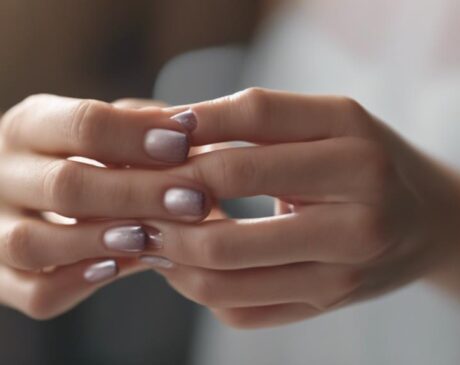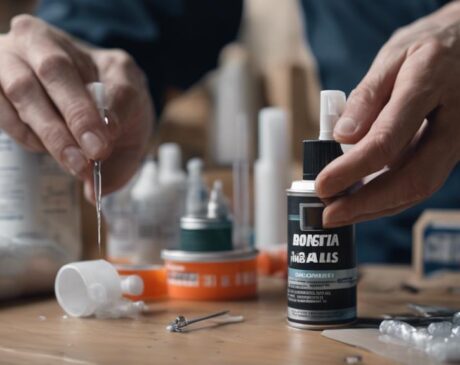What Is the Downside to Press on Nails

Press-on nails can damage natural nails, causing weakening and thinning. Premature lifting is common due to factors like water exposure. These nails have limited wear time, lasting a few days to two weeks. Challenges during application include proper sizing and aligning nails. Activities should be restricted to maintain them, avoiding excessive water exposure. Allergic reactions and skin irritation can also occur. Understanding cost considerations and maintenance are crucial. Exploring these downsides is essential before embracing this beauty trend.
Key Takeaways
- Potential damage to natural nails with prolonged use.
- Risk of premature lifting due to factors like water exposure.
- Limited longevity of wear, lasting a few days to two weeks.
- Challenges with the application process for a natural fit.
- Restrictions on activities and maintenance to prevent damage.
Potential Damage to Natural Nails
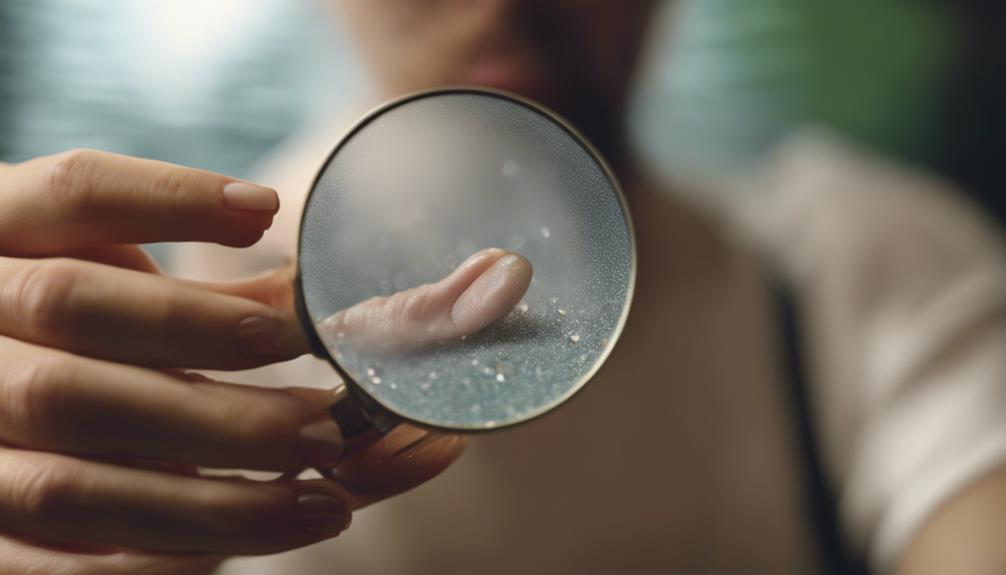
The prolonged use of press-on nails may lead to weakening and thinning of natural nails, potentially causing long-term damage. While press-on nails offer a convenient and quick way to achieve trendy nail designs, they can take a toll on the health of your natural nails if not used mindfully. The constant application and removal of press-on nails can weaken the nail bed, making natural nails more prone to breakage and damage.
Innovations in nail care have introduced alternatives such as gel nail extensions or dip powder manicures, which provide longer-lasting results without compromising the health of natural nails. These alternative options offer durability and strength without the need for frequent removal and reapplication, reducing the risk of long-term damage.
It is essential for individuals who enjoy using press-on nails to give their natural nails a break periodically to allow them to recover and strengthen. By incorporating proper nail care practices and seeking innovative nail solutions, it is possible to enjoy beautiful nails without sacrificing nail health in the process.
Risk of Premature Lifting
Premature lifting of press-on nails can be a common issue, causing frustration for many users. This can occur due to the adhesive weakening over time, especially with activities like washing dishes or typing. Understanding the factors that contribute to premature lifting can help individuals prolong the wear time of their press-on nails.
Lifting Concerns
Press-on nails may pose a potential risk of lifting prematurely, which can impact the overall longevity and appearance of the manicure. Lifting occurs when the adhesive bond weakens, leading to the nail detaching from the natural nail bed. This can be caused by various factors, such as exposure to water, oil, or excessive pressure on the nails. To mitigate the risk of premature lifting, it's essential to follow proper application techniques and care instructions. Additionally, choosing high-quality press-on nails and adhesives can help improve adhesion and reduce the likelihood of lifting. Below is a table outlining common causes of premature lifting and preventive measures:
| Causes of Premature Lifting | Preventive Measures |
|---|---|
| Exposure to water | Avoid prolonged water exposure and wear gloves when washing dishes |
| Oil on the nails | Clean the nails thoroughly before applying press-on nails |
| Excessive pressure | Be gentle on your nails and avoid activities that strain them |
| Incorrect application | Follow the manufacturer's instructions carefully for application |
Adhesive Weakness
When considering the durability of press-on nails, a significant factor to address is the strength of the adhesive, which directly influences the risk of premature lifting. Innovations in adhesive technology have aimed to mitigate this downside, but challenges persist. Key points to consider include:
- Adhesive bond quality impacts longevity.
- Environmental factors (e.g., humidity) affect adhesive performance.
- Application technique plays a crucial role in adhesion strength.
- Removing oils from the nail surface is critical for optimal adhesion.
As the demand for long-lasting press-on nails grows, addressing adhesive weaknesses through advancements in formula and application methods remains a focal point for enhancing user experience and satisfaction.
Limited Longevity of Wear
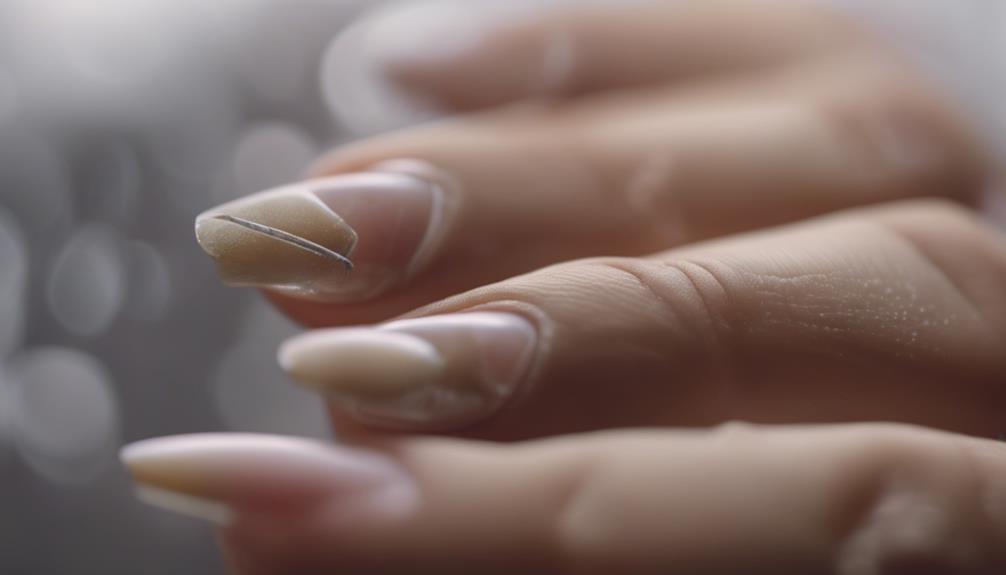
With regular daily activities, the longevity of press-on nails may vary significantly. While press-on nails offer convenience and quick application, their durability can be affected by factors such as the type of adhesive used, the quality of the nails, and how well they are applied. Typically, press-on nails can last anywhere from a few days to two weeks, depending on these variables.
Innovations in the beauty industry have led to the development of stronger adhesives and more durable materials for press-on nails, increasing their wear time. However, despite these advancements, certain activities like washing dishes, using harsh chemicals, or engaging in rigorous physical tasks can shorten the lifespan of press-on nails. Additionally, natural nail growth can cause the gap between the cuticle and the press-on nail to become more noticeable over time, impacting the overall appearance and longevity of the manicure.
To maximize the longevity of press-on nails, it is essential to follow proper application techniques, avoid exposing them to damaging substances, and invest in high-quality products that are designed to last longer.
Challenges With Application Process
A crucial aspect to consider when applying artificial nails is mastering the precise alignment and placement for a natural look. Achieving flawless press-on nails requires attention to detail and skill. Here are four key challenges that individuals may encounter during the application process:
- Proper Sizing: Ensuring the press-on nails fit each natural nail without gaps or overlapping edges.
- Adhesive Application: Achieving the right amount of glue to secure the artificial nails without causing overflow or mess.
- Alignment Accuracy: Aligning the press-on nails parallel to the cuticle for a seamless and professional finish.
- Air Bubble Prevention: Ensuring no air bubbles are trapped between the natural nail and the artificial nail for a smooth appearance.
Overcoming these challenges demands patience, practice, and a keen eye for precision. Embracing innovative techniques and tools can enhance the application process, leading to stunning results that mimic the appearance of salon-quality manicures.
Restrictions on Activities and Maintenance
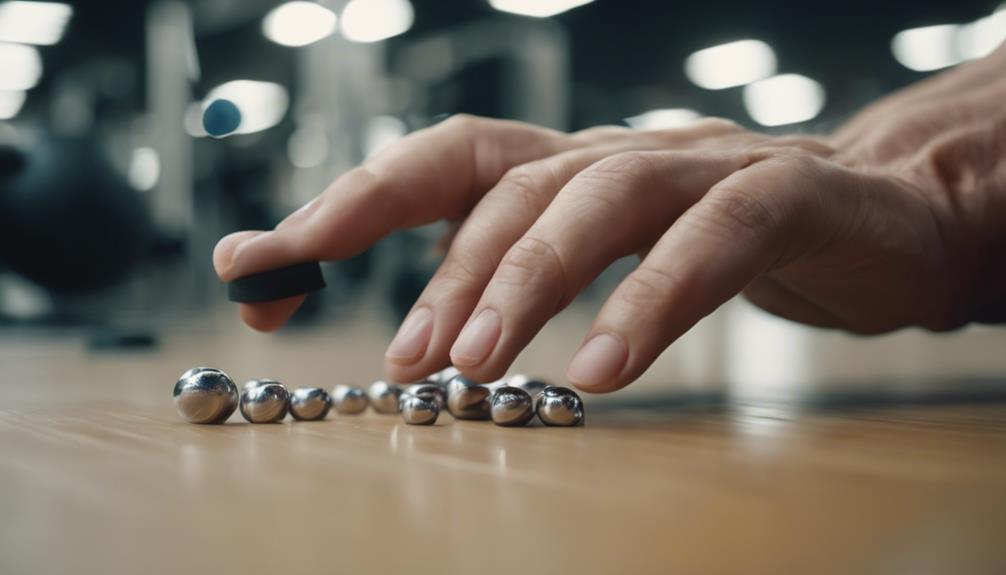
Engaging in certain activities and adhering to specific maintenance practices are essential considerations for individuals wearing press-on nails to ensure their longevity and appearance. Press-on nails can enhance one's look and boost confidence, but they require some care to prevent damage. Here are some restrictions on activities and maintenance tips to help maintain the quality of press-on nails:
| Activities to Avoid | Maintenance Practices | Tips for Longevity |
|---|---|---|
| Excessive water exposure | Use nail glue for reapplication | Avoid using nails as tools |
| Harsh chemicals | Apply a top coat regularly | Keep nails dry |
| Rough physical activities | Trim nails carefully | Use gloves for chores |
Following these guidelines can help individuals enjoy their press-on nails for a longer period. By being mindful of activities and maintenance routines, the durability and appearance of press-on nails can be preserved, ensuring a polished and stylish look.
Allergic Reactions and Skin Irritation
Allergic reactions and skin irritation are common concerns associated with press-on nails. Individuals may experience skin redness, swelling, and itching due to the chemicals present in the adhesive or nail materials. It is crucial to be mindful of any signs of discomfort or adverse reactions when using press-on nails to avoid potential skin issues.
Allergy Risks With Nails
Skin reactions to press-on nails can pose significant challenges for individuals seeking to enhance their nail aesthetics. While press-on nails offer convenience and versatility, allergy risks can dampen the experience. Here are some key points to consider:
- Potential Allergens: Some individuals may be allergic to the materials used in press-on nails.
- Skin Sensitivity: People with sensitive skin are more prone to allergic reactions.
- Adhesive Concerns: The glue used to attach press-on nails can sometimes trigger skin irritation.
- Reaction Severity: Allergic reactions can range from mild itching to more severe symptoms, necessitating prompt attention to prevent further complications.
Being aware of these allergy risks is essential for a safe and enjoyable press-on nail experience.
Skin Redness and Swelling
The manifestation of redness and swelling on the skin in response to certain materials or adhesives used in press-on nails can be a concerning indication of an adverse reaction. These reactions may stem from sensitivity or allergy to components like formaldehyde, toluene, or other chemicals present in the nail products. Skin redness and swelling are often the body's way of signaling an inflammatory response, which can lead to discomfort and potential long-term skin damage if not addressed promptly. It is crucial to pay attention to any signs of irritation, as prolonged exposure to irritants can exacerbate symptoms. Seeking alternative nail products with hypoallergenic ingredients or consulting a dermatologist for personalized recommendations may be necessary to avoid such reactions and maintain skin health.
Itchy Reactions on Skin
Instances of discomfort and irritation on the skin may arise, signaling potential allergic reactions or skin irritation from the use of press-on nails. These itchy reactions can be bothersome and may indicate underlying issues that need attention. Here are some key points to consider:
- Allergic Reactions: Some individuals may experience allergic reactions to the adhesives or materials used in press-on nails.
- Skin Sensitivities: People with sensitive skin may be more prone to developing itchiness or irritation when wearing press-on nails.
- Improper Application: Incorrect application techniques or leaving the nails on for too long can lead to skin discomfort.
- Chemical Exposure: The chemicals present in certain press-on nail products can cause skin reactions in some users.
Cost Considerations and Budgeting
Budgeting for press-on nails requires careful consideration of the ongoing costs involved to maintain the desired look without overspending. While press-on nails offer a convenient and cost-effective alternative to traditional manicures, it's essential to factor in the expenses associated with upkeep. The initial investment in quality press-on nails may vary depending on the brand and style chosen. However, the true cost lies in the maintenance required to preserve the nails' appearance over time.
When budgeting for press-on nails, it's crucial to account for potential replacements due to wear and tear. Regular activities like typing, washing dishes, or using hand sanitizers can impact the longevity of press-on nails. Additionally, the cost of specialized adhesives or tools for application and removal should be considered to ensure a seamless and safe experience.
To manage costs effectively, consider purchasing press-on nail kits that include multiple sets or opting for reusable nails that can be reapplied. By evaluating the ongoing expenses and incorporating them into your budget, you can enjoy the convenience of press-on nails without compromising on style or financial prudence.
Frequently Asked Questions
Are Press-On Nails Safe to Use for People With Allergies or Sensitive Skin?
Press-on nails can be safe for people with allergies or sensitive skin, but caution is advised. Always check the ingredients for potential allergens. Some adhesives may cause irritation. Patch testing is recommended before full application to mitigate adverse reactions.
How Often Do Press-On Nails Need to Be Replaced or Maintained?
Press-on nails typically last 1-2 weeks before needing replacement, varying based on individual activities and quality of application. Regular maintenance involves re-gluing loose nails and avoiding prolonged exposure to water for longevity.
Can Press-On Nails Cause Damage to the Nail Bed or Cuticles Over Time?
While press-on nails offer convenience and style, long-term use may potentially impact the nail bed and cuticles due to the adhesive and removal process. It's advisable to prioritize nail health and give nails periodic breaks.
Are There Any Specific Activities or Environments That Should Be Avoided When Wearing Press-On Nails?
When wearing press-on nails, it is advisable to avoid activities that involve excessive water exposure, such as prolonged swimming or soaking in hot tubs, as this can weaken the adhesive bond and cause the nails to lift prematurely.
How Do the Costs of Press-On Nails Compare to Traditional Salon Manicures or Other Nail Treatments in the Long Run?
Press-on nails offer a cost-effective alternative to traditional salon manicures and other nail treatments in the long run. While initial costs may vary, the overall savings can be substantial, making them a budget-friendly choice for trendy nail designs.

